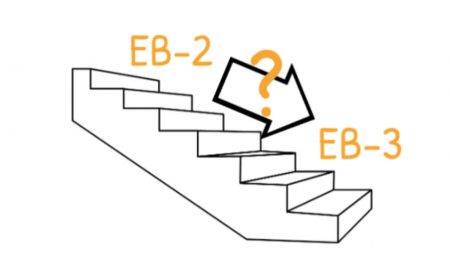
Applying the adage of “if we had a dollar for every time we heard …” to last week would end like this: If we had a dollar for every time we heard please downgrade my EB-2 petition so I can get my green card faster, we’d have at least $100. And that’s $100 for just a few short days since the October 2020 Visa Bulletin was published.
Yes, the October 2020 Visa Bulletin sent shock waves through communities of Indian nationals waiting for their EB2 priority date to become current. Many rushed to the phone to call and ask if their approved EB-2petition could be downgraded to EB-3, while preserving the pre-2015 priority date, so they could immediately file an application to adjust status to permanent residence.
The short answer to the question of “can this be done” in most cases is “yes”. And for some individuals, doing so would make sense. But for many, it would not. And here is why.
The advancement in the priority date in the October 2020 Visa Bulletin is in the “Dates for Filing” chart, the so called “table B”. And yes, USCIS stated that if your EB3 priority date is earlier than January 1, 2015, you can go ahead and file the adjustment application. You can even hurry to file that application so USCIS receives it on October 1 and you thus avoid paying the additional I-765 and I-131 fees. And then… you wait for your priority date to become current under the “Final Action Dates” chart as USCIS will not approve your adjustment application until a visa number is actually available for your priority date.
But what if you have an approved EB-2 petition with a priority date prior to 2015 – should you downgrade to EB-3 so you can file an adjustment application immediately? For most, the answer to this question is not so simple. From a practical standpoint, in order to downgrade an EB-2 petition to an EB-3 petition, the employer must file a new I-140 (based upon the previously certified PERM). Even if an employer is willing to do this, the question remains whether it makes sense to downgrade.
This analysis should begin by looking at the EB2 priority date and its expected time for becoming “current”. Again, this is important because even though a person’s priority date may be “current” under the EB-3 Dates for Filing chart, that person’s adjustment application will remain pending until their priority date becomes “current” under the EB-3 Final Action Dates chart.
Downgrading and filing for adjustment will place an applicant into the “adjustment pending” category (and result in realization of certain benefits) but it does not necessarily mean that such applicant’s path to an actual green card will be faster. The EB2 category will advance per its own trajectory and it may advance to “current” under the Final Action Dates chart before the EB3 category does, so each individual must undertake this analysis carefully.
Further, it is important to note that CSPA protections for children that may age-out do not extend to applications filed under “table B”.
As mentioned above, there are certain benefits to be gained by the filing of an adjustment application even though such application may be pending for a very long time. Each person should weigh the pros and cons of the adjustment filing with their immigration attorney (i.e., in many cases this would not be your employer’s attorney).
Immigration attorney Rajkrishna Iyer, partner at Immigration General Counsel, specializes in employment based immigration. His practice includes companies from a variety of industries, and healthcare and technology corporations account for a large portion of his client base. He thoughtfully curates strategies for each client and advises them on all aspects of US immigration. Raj is a frequent speaker and recognized expert on employment based immigration; among his peers he is known for being a close reader of the Regs and a generous mentor.

